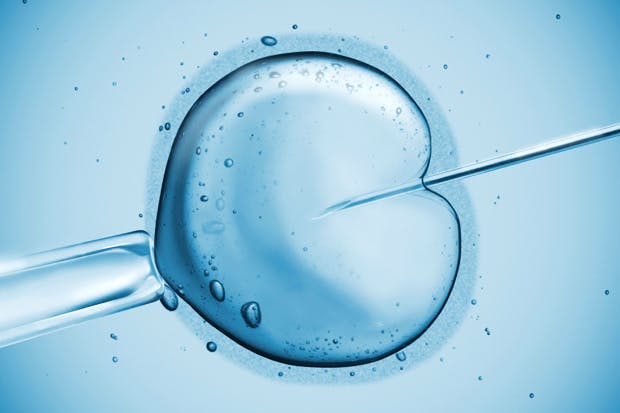Abayomi Ajayi
One in four Nigerian couples experience infertility. Many men and women who come from large families with many siblings and nieces and nephews never expect to experience infertility. There are couples for which infertility is the most upsetting experience of their lives.
While no treatment plan fits every couple perfectly, it’s not possible to say what specific individual treatment paths may look like. Some couples may require surgery before they try any fertility treatments; few may first need to treat an underlying medical condition while others may never need fertility treatment. The cause of infertility, research on particular situations, age, personal desire to keep trying before moving onto the next level, feelings towards or against one form of treatment or the other, insurance coverage, and financial situation all play a major role.
It’s a good thing that Assisted Reproductive Techniques (ART) or infertility treatment procedures such as In Vitro Fertilisation (IVF) can offer real hope for those desperately desirous of having their own biological children. IVF is a complex process that was developed in 1978. Its success led to the birth of Louise Brown, the world’s first ‘test tube baby’ who was born in England. Now, IVF is a common treatment for infertility. It has helped numerous couples create the families they so desire.
As a procedure, IVF enables a woman’s ovaries to be artificially stimulated to produce many eggs in one single cycle. The mature eggs are then removed through transvaginal aspiration (a procedure done under sedation) or even laparoscopic surgery. Sperms are collected from a man, typically through masturbation. An embryologist then places each egg in a bath of sperm, attempting to create embryos. Once fertilisation has taken place, one or more embryos are then transferred into a woman’s uterus in the hope that at least one will implant successfully and be carried to term.
The whole idea of undergoing an IVF procedure is based on a simple principle. Basically, IVF is the process of joining a sperm and an egg outside of the woman’s body and inside a culture dish in a laboratory. Before undergoing IVF, fertility drugs or hormones may be prescribed to stimulate follicle production.
The goal is to stimulate the ovaries so multiple eggs can be harvested, thus increasing the chances of fertilisation, pregnancy, and a live birth. The fertility drugs can be given in multiple sessions closely monitored by the fertility specialist. The doctor may take multiple blood tests and do ultrasounds to monitor possible egg production.
Once the eggs have been harvested, the best are placed in incubators in a controlled lab. The sperm and eggs are mixed together and monitored closely. Sometimes with the IVF procedure, embryos can be frozen for later use.
After the embryo has developed in the lab for a few days, the doctor will choose the best candidates for transfer. Then, using a catheter guided by ultrasound, the doctor will then transfer the embryo through the cervix and into the uterus. Sometimes with the IVF procedure, multiple embryos are implanted into the womb, increasing the chances of a successful pregnancy and live birth. This also increases the chances of multiple births.
There are risks with IVF but they are minimal. Your ovaries can become hyper stimulated, you may also have side effects from the anesthesia used in the IVF procedure. Some women have occasional bleeding and nausea after the IVF procedure. However the success rates surpass the risks.
It may take several IVF cycles before you get pregnant, depending on your age and health status, the virility and health of your male partner, and other environmental factors. A young healthy woman has an excellent chance of progressing from stimulation to follicle aspiration and from pregnancy to delivery. However, an older woman with many causes of infertility may have a much greater rate of cycle cancellation and pregnancy loss before delivery.
There’s a greater risk of IVF procedures not resulting in a full-term pregnancy with women over 40. When donor eggs are used, age does not affect IVF success rates. There is a 35 per cent transfer success rate regardless of the woman’s age.
As a woman, there are several situations under which IVF could be your only option to have your own biological child. If you have blocked Fallopian tubes, IVF may be considered as the first step of treatment because it is your only option for a biological child. The Fallopian tubes connect the ovaries to the uterus. If an egg released from the ovaries can’t reach the uterus—and sperm can’t get to the egg—you can’t get pregnant. However, surgical repair of the fallopian tubes can avoid the need for IVF, but success rates vary considerably, and it’s not a good option for most women with severe tubal disease.
Due to the increased success rates, frozen eggs and sperms can be used with IVF. If you have frozen eggs, ovarian tissue or embryos, you’ll need IVF to conceive with that cryopreserved (frozen) tissue.
In cases of severe male infertility, IVF with ICSI may be the best option for biological children. IVF-ICSI is often necessary in cases of severe problems with sperm motility (movement) or morphology (shape.) It may also be required if the sperm count is very low.
A man with zero sperm count (azoospermia) can still have a biological child thanks to IVF-ICSI. The immature sperm cells can be extracted directly from the testes. The sperm cells are then allowed to mature in the lab. Sperm cells matured this way can’t fertilise an egg themselves, but IVF with ICSI is required for conception. With IVF-ICSI, a single sperm is injected directly into an egg.
If you and your partner are at high risk of passing on a deadly genetic disease, IVF may be your best or only option. This may also be true if you are experiencing recurrent miscarriage. In this case, you would need IVF with preimplantation genetic screening (PGS) – when an embryo is generally checked for normal chromosomal counts; or preimplantation genetic diagnosis (PGD), that is, when an embryo is tested for a particular disease.
If a woman has no uterus, she won’t be able to conceive or carry a pregnancy, but she may be able to have a child through a surrogate. If she has her ovaries, or has cryopreserved eggs or ovarian tissue, she may have a biological child with the help of surrogacy. Alternatively, a donor egg may be used along with the biological father’s sperm cells. All these require IVF. Surrogacy with IVF may also be required if there are severe uterine factor infertility issues that can’t be repaired surgically.
Deciding to pursue IVF is a big decision. After all this, if you’re still wondering if IVF may become the next step in your personal circumstances, speak to your doctor. If you disagree that IVF should be the next step, or you are curious if you have alternative options, there’s no harm getting a second opinion.
IVF is not a cheap procedure but it is affordable and often the best choice when other less-expensive ways to get pregnant have been unsuccessful. Success with IVF is both emotional and financial, but knowing the chances of making a baby are on your side, most couples who undergo the IVF procedure strongly believe that it’s a commitment worth making.





